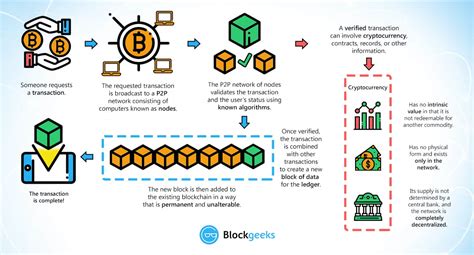Understanding Ethereum Mining: How Blocks Are Validated and Added to the Blockchain

The decentralized, open-source nature of Ethereum has made it one of the most widely used blockchain platforms in the world. At its core, Ethereum is based on a consensus algorithm called Proof of Work (PoW), which requires miners to solve complex mathematical puzzles to validate transactions and create new blocks. In this article, we’ll dive deeper into the block validation process when mining Ethereum.
The Mining Process
Below is an overview of the steps involved:
- Receive a transaction: When a user sends cryptocurrency or data through an Ethereum wallet, it is broadcast to the network.
- Verify the transaction: Network nodes check the transaction to make sure it is valid and complies with Ethereum’s rules.
- Block Creation: Once a sufficient number of transactions have been confirmed, the block creator (known as a “block miner”) selects a group of unconfirmed transactions called a “block” or “snapshot.” blockchain.”
- Hash function: The block is mined using a complex mathematical algorithm, specifically SHA-256 (Secure Hash Algorithm 256). This process involves calculating a unique fingerprint for each block.
- Block verification: Once the block hash is calculated, it must be verified by multiple nodes in the network to ensure that:
- The block has enough transactions (at least one “mining transaction”) and is not empty
- All transactions in the block are valid and follow Ethereum rules
- The block hash is unique and consistent across the network
- Block addition: If the block passes verification, it is added to the blockchain as a new block.
The role of hash functions
SHA-256 (or similar) hash functions play a crucial role in block verification. By calculating a unique fingerprint for each block, miners can ensure that the data in the block has not been tampered with or altered during transmission. This ensures the integrity and authenticity of the transactions being validated.
Proof of Work: The Mining Algorithm
The Proof of Work (PoW) algorithm is used to validate transactions on the Ethereum network. Miners compete to solve a complex mathematical puzzle that requires significant computing power and energy consumption. The miner who solves the puzzle first gets to add their transaction to the blockchain, as they have solved the more complex puzzle.
Conclusion
In conclusion, block validation in Ethereum mining involves several key steps:
- Transaction receipt
- Block creation (including hashing)
- Transaction verification
- Block content validation
- Block addition
A unique fingerprint calculated by SHA-256 ensures that each block has been verified and added to the blockchain. The proof-of-work algorithm requires significant computing power, but it provides a secure way to validate transactions on the Ethereum network.
I hope this article helped clarify the block validation process in Ethereum mining!